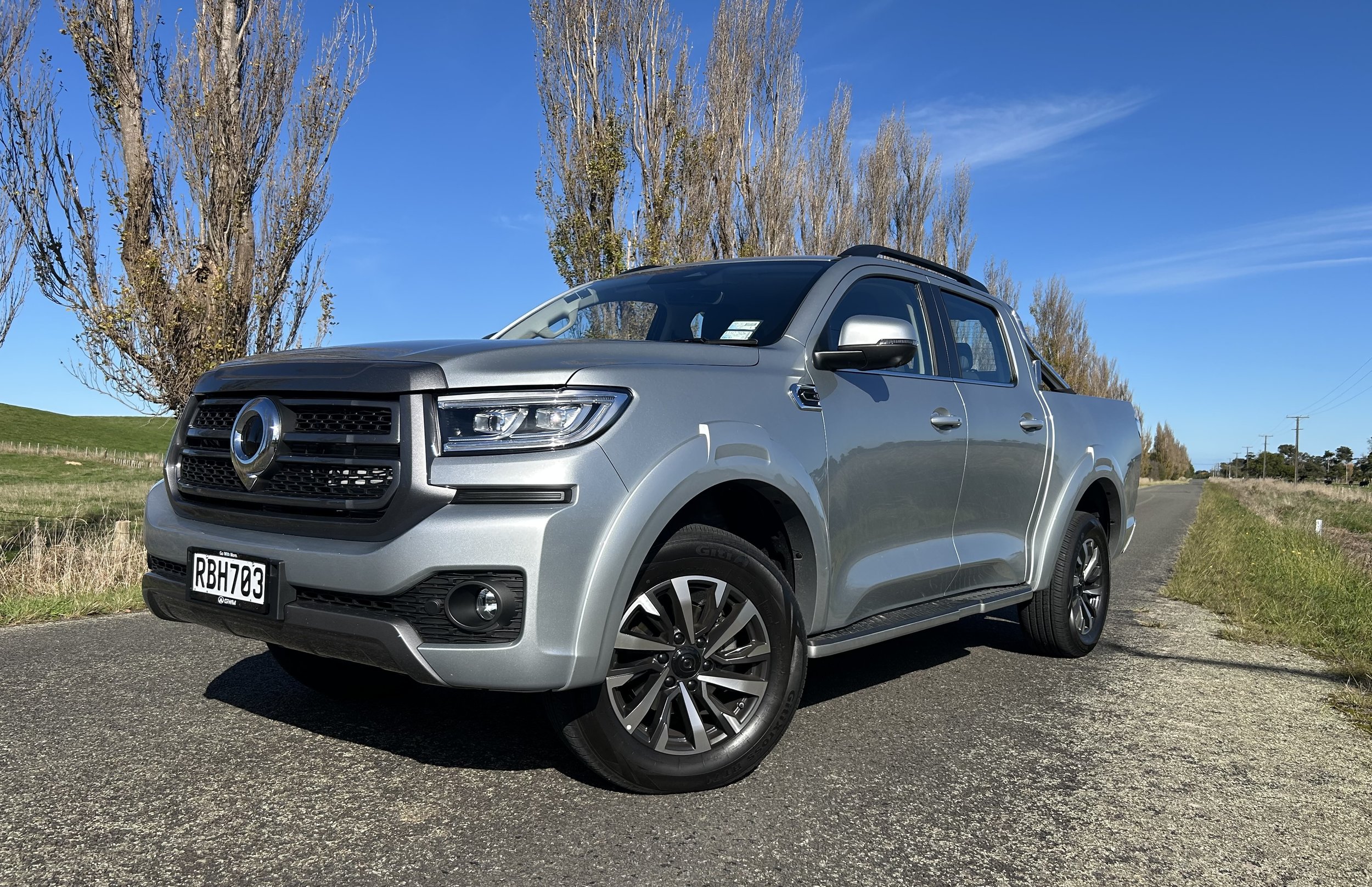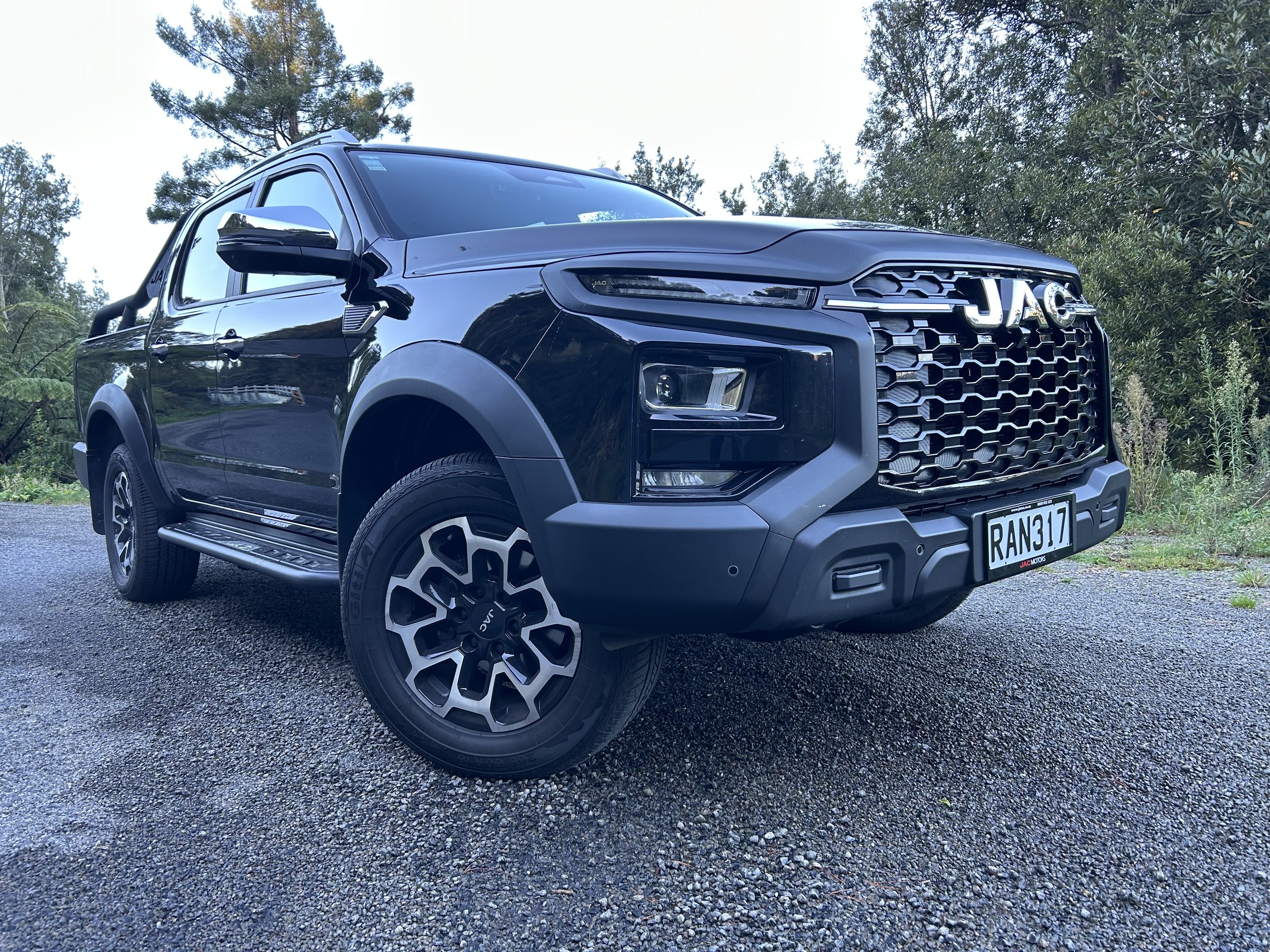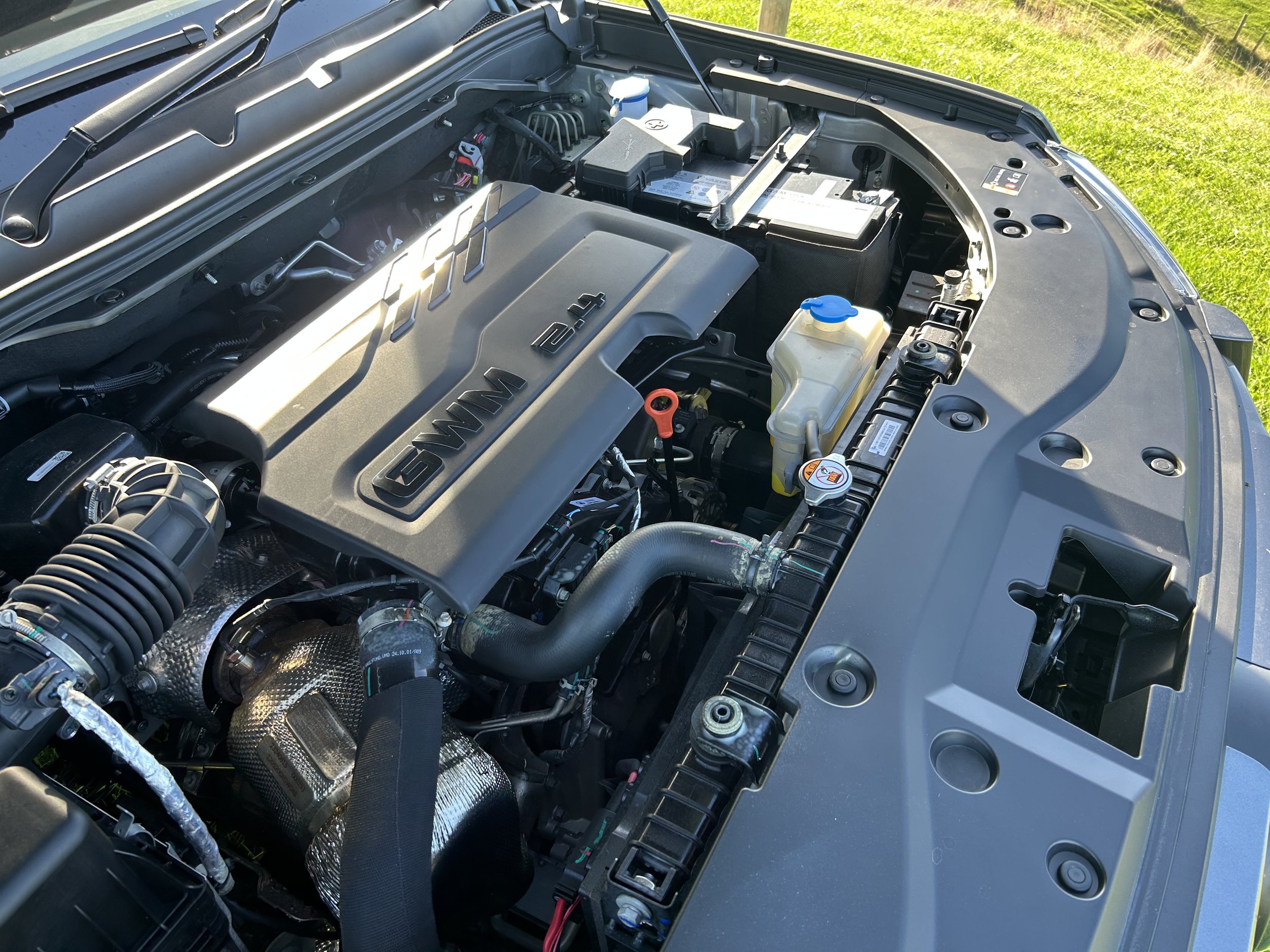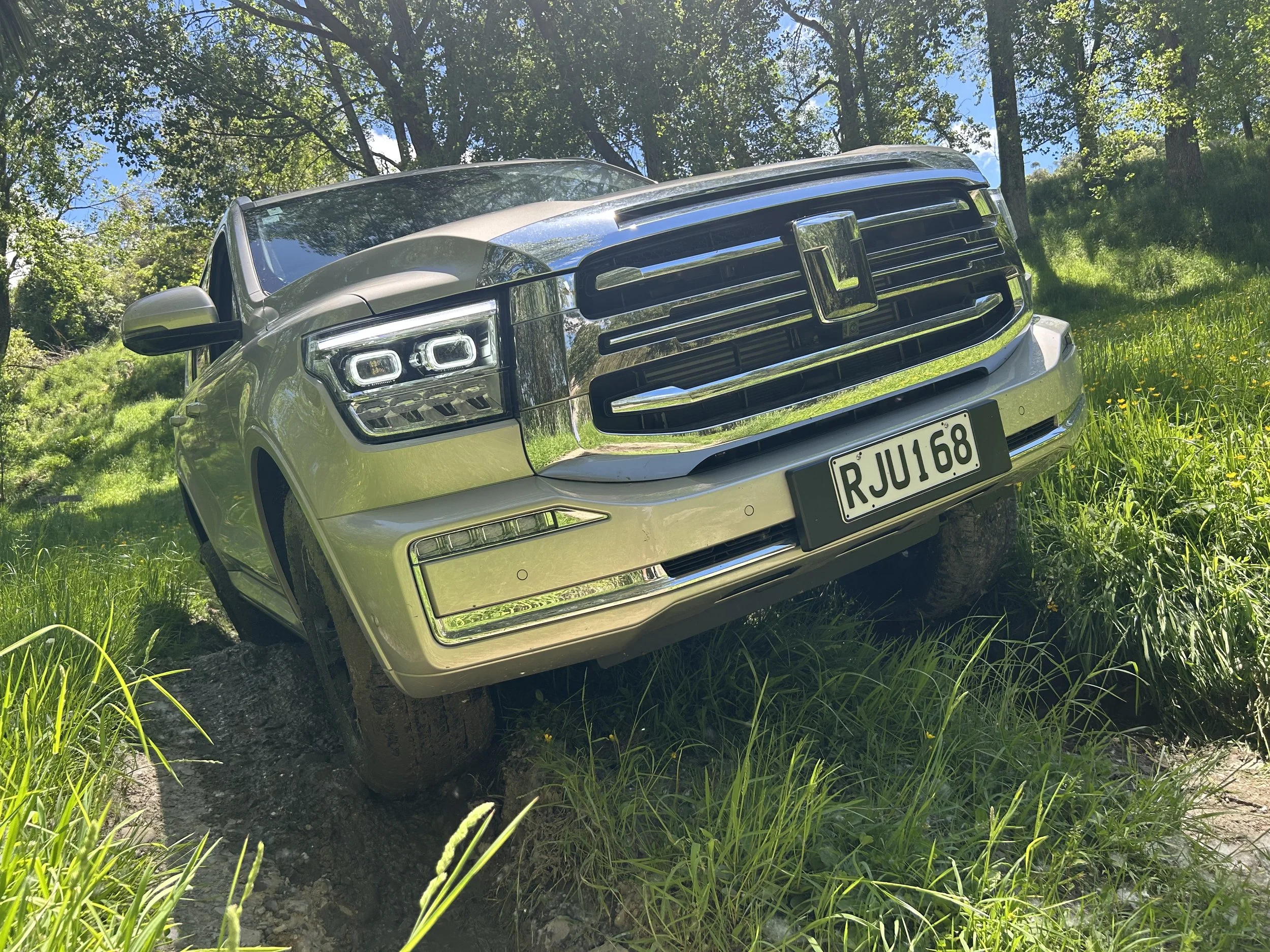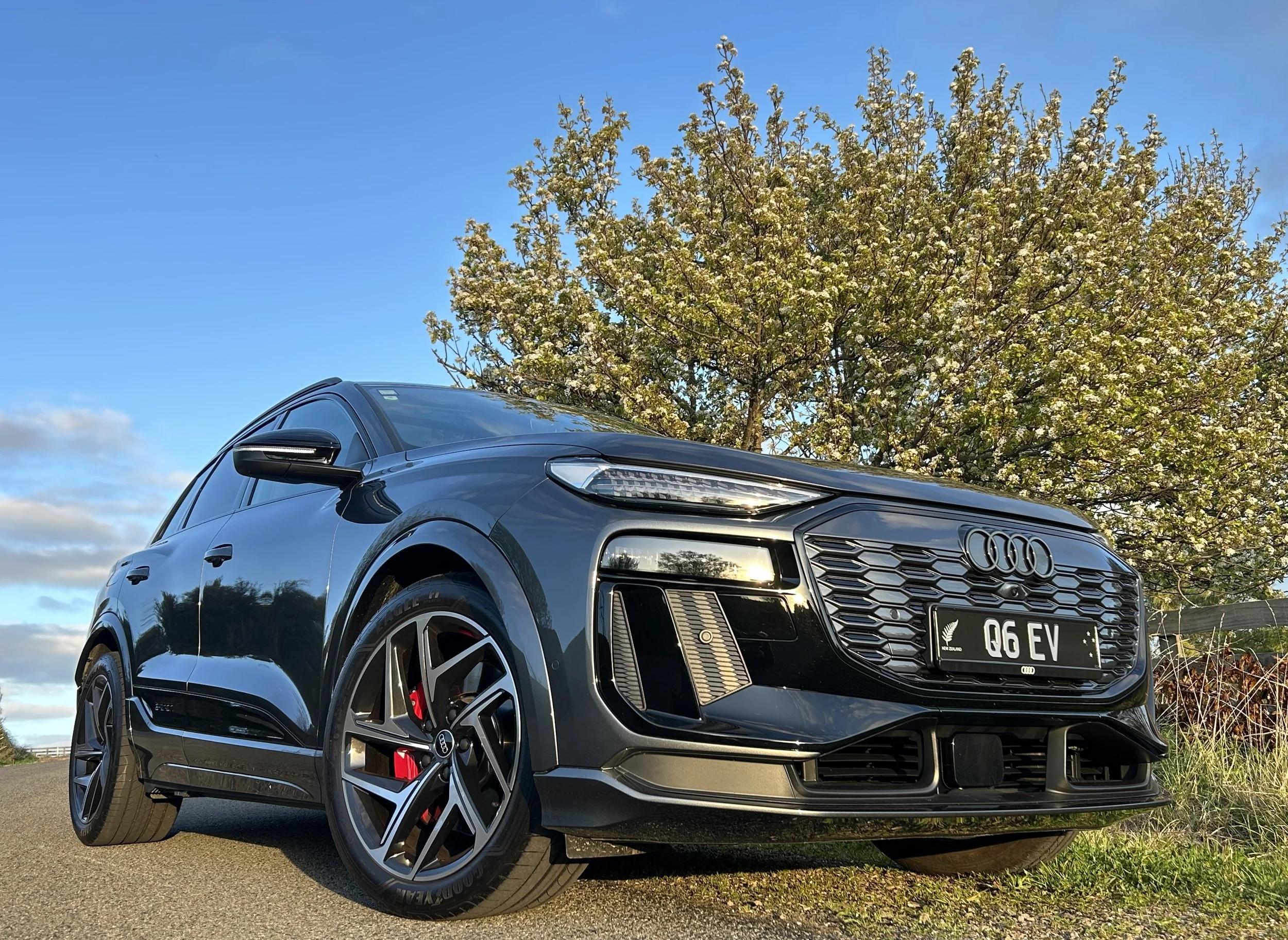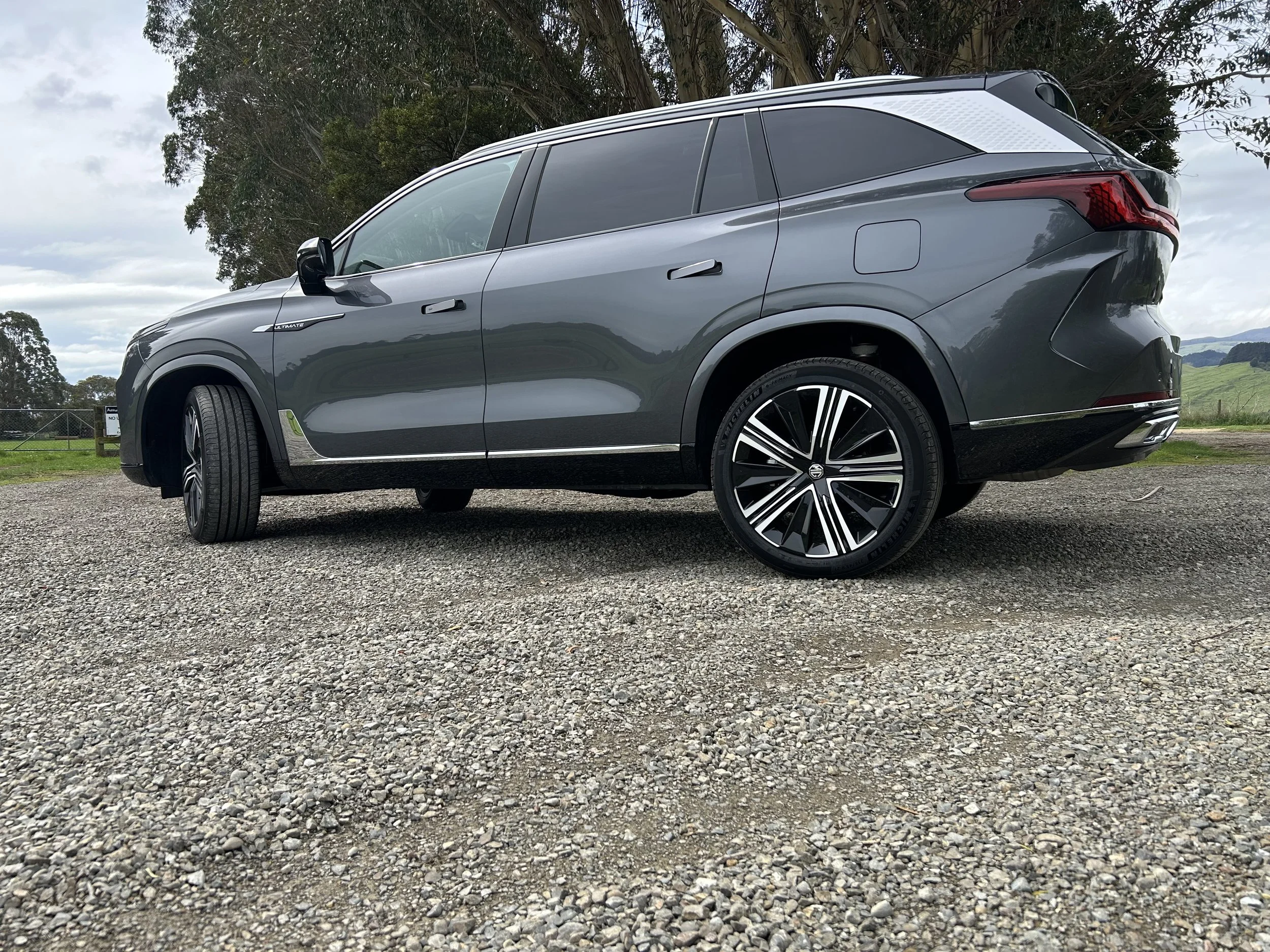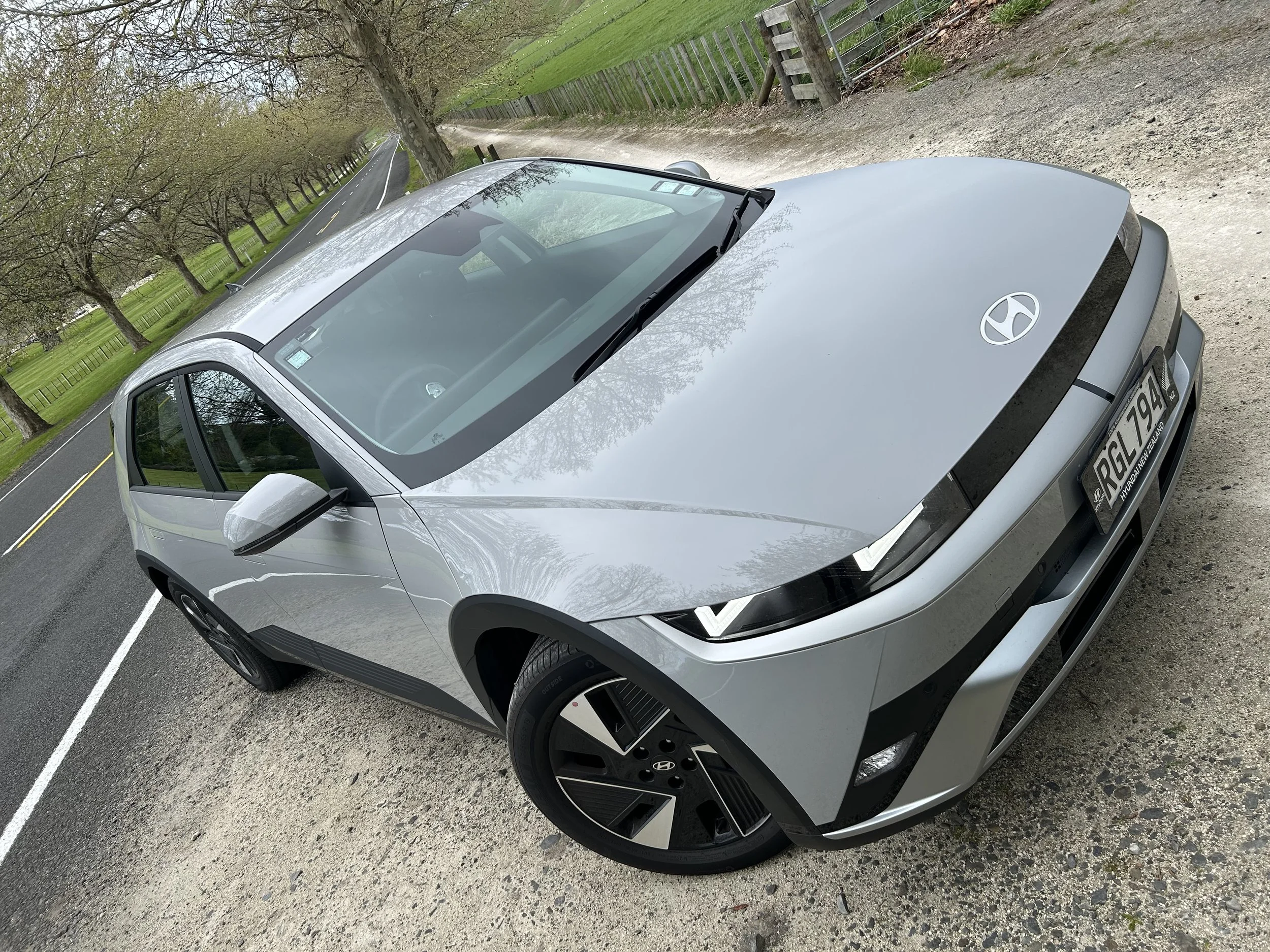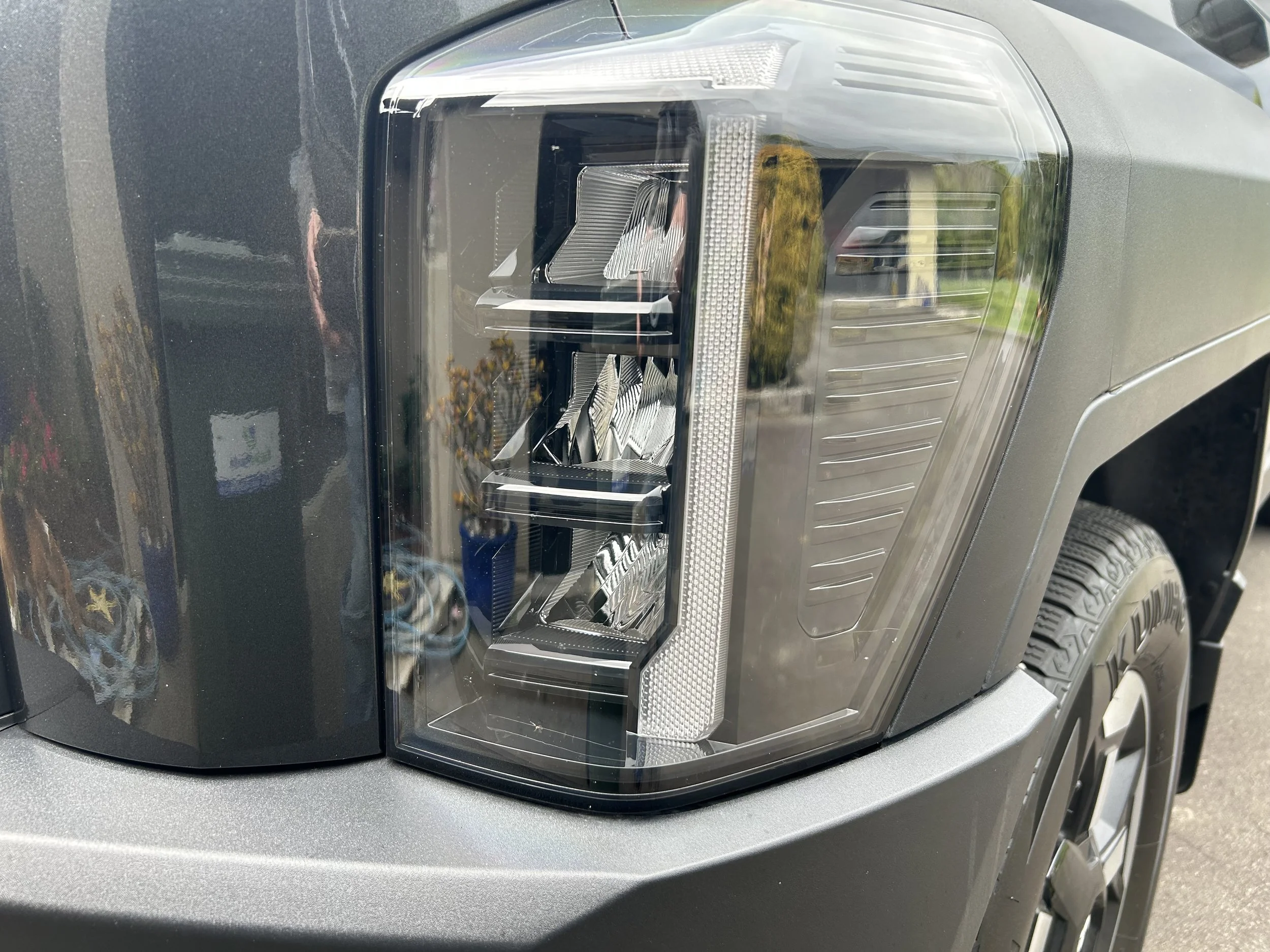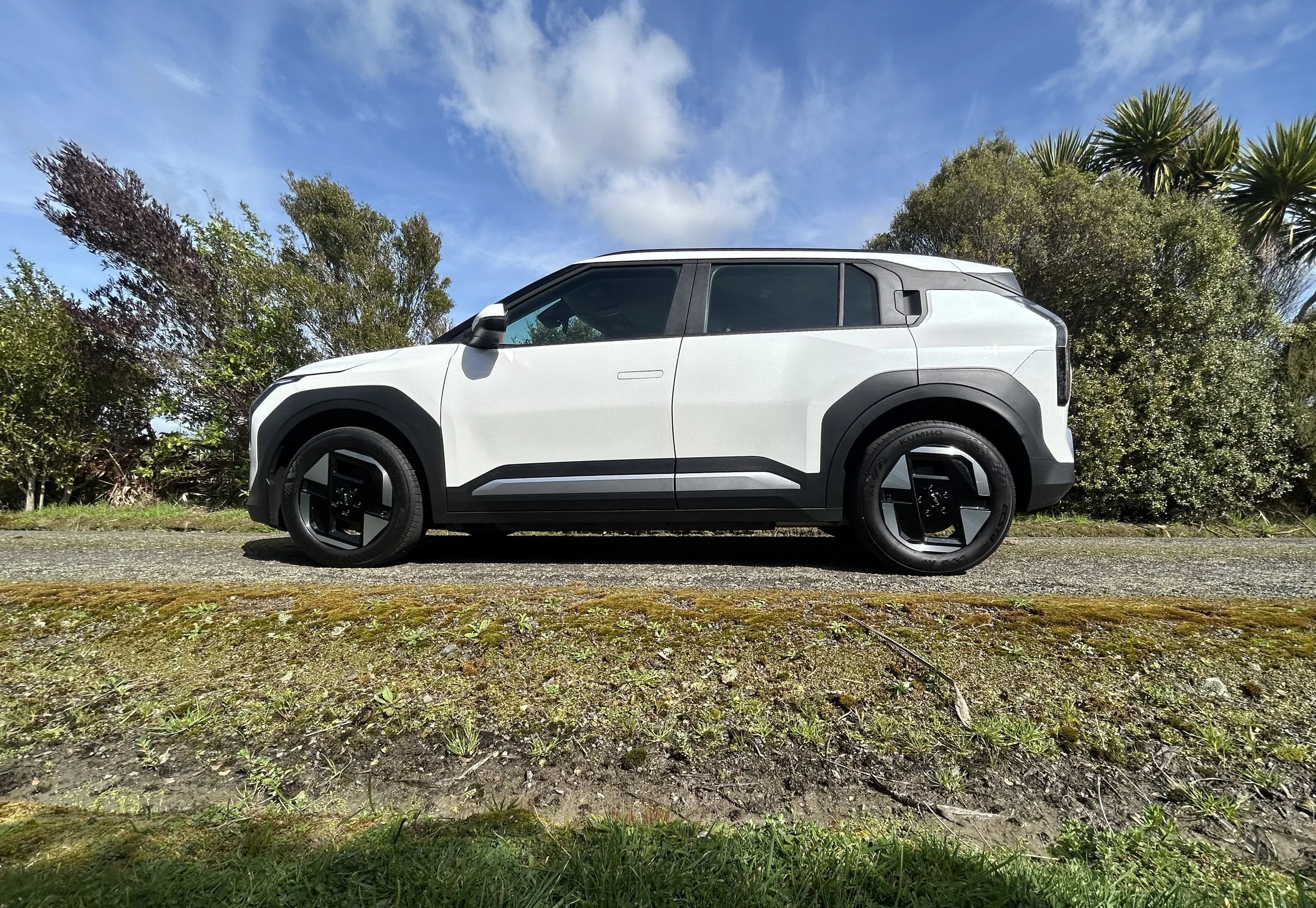GWM Cannon Lux/JAC T9 road test review: Loading up for a fight
/China Inc is ramping up its attack on the lower end of the lucrative ute sector. Some established brands need to watch their backs.
CHINA is building increasingly good vehicles for very good prices, and the world is taking notice.
Biggest strides have been with cars, but it’s been nibbling away at another sector for ages.
One-tonne utilities are the Kiwi work-play choice. The sector is lucrative. The rewards stand to be huge. Everyone’s looking for an edge.
For Chinese brands, there are two plays. On the one hand, it pitches ‘future forward’ with plug-in hybrid types. All petrol. They will doubtless penetrate, but perhaps mainly in cities. Rural NZ favours diesel.
Actually, change that thought: Kiwi ute buyers are diesel drivers. And we love these traydecks in automatic, four-wheel-drive, double cab format.
That’s the buyer the GWM Cannon Ultra and JAC T9 are chasing, with a focus on a do-it-all capability and value, with attention-grabbing prices and highly competitive warranties.
On strength of spending a separate week with each - unfortunately they couldn’t be availed on the same turf at a common time - they imprinted positives.
Better than the well-established best? Not yet. One common hindrance are frustrating and overbearing safety systems. Also, there’s the matter of ultimate durability. Also, as sharply priced as both are, they’re not totally in clear air. Mitsubishi had a handily-configured Triton GSX-R rig in the same spend sector as the JAC. Runout Navara was firing a broadside at Cannon.
GWM Cannon Lux
Price: $43,950.
Powertrain: 2.4-litre four-cylinder turbodiesel, 135kW/480Nm, nine-speed auto, four-wheel-drive.
How big: 5416mm long, 1947mm wide, 1884mm tall.
We like: New powertrain; sharp styling; even sharper price; safety ingredients are fulsome for spend.
Not so much: Irksomely intrusive driver assists; daft indicator; basic load anchorage points; too much screen reliance - some functions would work better with buttons.
FOUR years on from its initial release, the smaller and cheaper of GWM’s two ute lines has seriously freshened up.
The exterior styling and interior modernise; more importantly, it achieves a new engine - the same 2.4-litre, with the same outputs, that goes into the physically larger, more affluent but also $11,500 more expensive Cannon Alpha.
If you don’t need the extra size - and, in physical dimension, the GWM utes aren’t that far apart - then the Cannon Lux looks like the best deal around. Class competitive practicality and performance. It’s surely going to be irresistible to the value-centric, all the moreso now the maximum braked towing rating has lifted from 3200kg to 3500kg. That’s sitting pretty with the top guns.
But not without concession. As much as this facelift - which is what it is, regardless GWM calls it a ‘second generation’ - delivers fixes for many of the criticisms levelled at the first iteration, it’s not an entirely easy thing to live with.
The curiosity about the Cannot is that it delivers many truly technical advancements yet sadly still trips up over some basics.
Example one: An indicator wand is a simple device; how could GWM make it a frustration to use? Well, they can … the stalk won’t allow a light hold to signal a lane change, but instead will leave the indicator flashing. Try to reset to centre … and it will flash the other side. Other road users will wonder ‘what the heck?’ As will you.
Example two: In any other vehicle I’ve driven, setting a clock to local time is a simple process; mostly a matter of pushing a button or two. Job done. Not here. For some totally unfathomable reason, Cannon won’t allow that, but instead it offers multiple time zone preferences (see photo), all seemingly to China domestic condition, with ‘East Area 10’ being the closest to want I wanted (but still half an hour shy). All a nonsense here and beyond comprehension.
Every vehicle out of China seems to have ADAS issues, and the JAC is also not faultless. The Cannon’s is less sophisticated than the Alpha’s, but even the base system is overzealous to triggering bings, bongs and self-induced braking to situations and scenarios far more polished set-ups would simply shrug off.
Because of this, the active cruise control was best kept deactivated. Lane keep was also aggressive and always tugging at the wheel. The reason for having these systems is understood, and accepted, but you just tire, quickly, of its inconsistencies.
Those issues ask for special thought. But the beauty of electronics is that they can be reprogrammed. Go to it, GWM.
If you just need a ute to be a ute, and to perform honest ute tasks while also perhaps undertaking a family and weekend recreational role, then the Cannon Lux is going to tick a lot of boxes.
The powertrain update is one reason to at least give it consideration. On paper, the new engine makes 15kW and 80Nm more than the previous 2.0-litre unit. It’s now also 10kW and 70Nm ahead of the JAC.
On the road and off it, the extra muscle is very obvious; likewise that it’s smoother and, though obviously still a diesel, less clattery.
Also, while flexing more mightily, it is also often using less fuel; The 8.4 litres per 100km optimal GMW cites is down from 9.4L/100km for the old rig. Also, while drive remains an on-demand four-by-four system, the transmission is now a nine-speed GWM unit, replacing an eight-speed ZF box that could well be the one JAC employs.
Peak power effects at 3600rpm; more importantly, the torque band is full fat between 1500 and 2500rpm. Acceleration is brisk for a ute; mid-range pull is also reliable. It’s a ute in which you can overtake with confidence. The gear shifts are very nice, too. There’s a control to switch between Normal, Eco and Sport drive modes, but the changes in gear holding and steering weights don’t fundamentally alter. Leave it in Normal.
GWM says the real strength from this new engine shows with towing. How hugely frustrating, then, that the test Cannon lacked a towball. Talk about opportunity lost.
The tried and true method of sticking some weight on the deck - in this instance, assorted race car bits - doesn’t fully resolve the ride, but of course improves it.
The pre-facelift truck’s pop-out tailgate step patently failed to impress someone at head office, because it’s gone now. A spray-on bed liner is standard and seems robust; a shame the tub itself a bit rudimentary. Just four basic tie down points and no power outlets.
This model is shared with Australia, but over there they sell it standard with another kind of accessory bar; the well side has threaded holes for it that might be susceptible to weather intrusion.
The ute’s restyle hasn’t made it look much less brash - being much less chrome-tastic means the grille is at least now much less of an acquired taste - but overall it lends a more macho stance.
For interior dimension and space, the Cannon will comfortably fit four adults. Three full-sized bodies across the back bench will be cosy, kids will have enough personal space. Headroom front and back is good, thanks to how the roofline shapes. Space up front is also good with the powered seat offering good adjustment and the reach/tilt adjustment on the steering is wheel appreciated.
The interior has been completely overhauled with a new dashboard, console, infotainment display and a new steering wheel. It looks very modern and has good materials - nothing too expensive, but still pleasant to look at and touch.
Maybe GWM has tried a bit too hard in facilitating the ‘boat throttle’ gear shift lever. It could have been plucked from a concept and maybe should have remained in one as it hasn’t a tactile feel. The little ute motif on the dash in front of the passenger is a neat artistry (funnily, JAC has the same, so who copied who?).
A wireless phone charger and a USB-C and -A port along with a 12-volt outlet on the lower dash is nice to have. The array of three pre-wired 12-volt accessory switches on the centre console will be handy if you want to add additional lighting, or an air compressor. But if that isn’t your intent, then you might wish these were relocated from the right of the gear selector to the left, and the diff lock and four-wheel-drive low range activations that site on the passenger side were brought across.
That 12.3 inch central screen is the particular element that makes the cabin feel substantially more upmarket than the pricing would have you believe.
The display quality is very good - as on the JAC, the Cannon’s reversing camera delivers a image clarity that normally only comes on upmarket cars - and its super fast in reactivity.
The big screen supports full screen smartphone projection, but be aware that if you determine to prioritise (in my case) Apple CarPlay, then it’s all in.
For instance, if you want to alter the HVAC, the shortcut buttons under the screen to the climate control and fan settings don’t respond unless you first revert back to the native main screen, which isn’t as easy as it might seem. Likewise, the swipe-down shortcut to alter the active cruise control on the touch screen doesn’t work if you’re using CarPlay. And the instrument cluster locks out when lane assistance is active. These are all strange aspects.
The driver’s display has also become fully digital. The configurability isn’t massive - though the tyre display, in addition to showing pressures, also reveals tyre temp, which is a new one on me. The main representations would be far more coherent at a glance if they just represented as analogue dials, rather than colour splashes and numerals. When it idles, it pulls 0.8 on the taco … which means 800rpm. I guess GWM wanted to reinforce it has moved away from dials … but, frankly, digital reproductions of analogue displays are genuinely useful.
The overall comfort provision is strong and it’s hard to argue against it offering a lot of stuff, including a very good stereo, for the spend. If you don’t think it has enough fineries, there’s an Ultra edition coming soon.
As much as it has family friendliness, this is no around-town cruiser ute per se. Take it into busy city streets and you’ll find there are some blind spots (generally catered to by the alert systems) and, though not it doesn’t feel as physically large as the JAC, you also need to consider being tidy about your parking. A turning circle of 13.1 metres means you will become adept at three-point turns in a street setting.
In respect to dynamics? Some utes are almost like cars. The Cannon is not within that select group. The steering, unladen suspension tune and braking are utterly trad ute; in laden form it’s bouncy and you do need to keep sharp about cornering speed and following distances as everything feels a bit vague and lazy.
You’d call the driving feel a bit old-fashioned, all in all. Still, GWM has people in Australia whose job it is to tune the product for our regional conditions. It says the Cannon has benefitted from their input and, quite probably, that’s the case.
You need to be on your guard on corrugated gravel, when it’s more jittery than some - the tail kicks and the nose washes out - and wet surface adhesion is also something to watch; a change of tyre away from the China-made OEM type might help it there.
In respect to that, the edginess the rubber imparts on slippery seal might be more to do with the compound than the cut of the tyre; though the tyre has to look of being more for hard surfaces than soft, the tester had no trouble driving through a farm.
That environment also revealed the quality of the Borg Warner permanent 4x4 system; appreciated was how easy it is to get in and out of low-range and to use the differential lock. With those engaged, it’s got good aptitude for ruts and steep climbs and descents. I was impressed. Even so, an invitation to throw it into a bog hole was politely refused; the tyre profile just looks too street-smart for that level of mucking in.
In respect to safety assists, the Cannon ticks off all major ingredients, but be aware that the five star ANCAP rating it holds was determined by testing the original in 2021.
The test was less rigorous then and, also, ANCAP scores retire six years from the date of the test - a reflection of the organisation’s sentiment that a vehicle tested to older standards may no longer reflect its current safety level.
JAC T9
Price: $49,990
Powertrain: 2.0-litre four-cylinder turbodiesel, 125kW, 410Nm, eight-speed auto, four-wheel-drive with 2wd option.
How big: 5330mm long, 1965mm wide, 1920mm tall.
We like: Build quality and it feels tough; comfortable cabin, excellent driver’s seat; more settled than GWM on gravel.
Not so much: Heavy bonnet; ADAS quirks; poor audio; needs more grunt.
SOMETIMES it’s nothing to do with size, specification or sizzle. Sometimes it’s just down to a sense of integrity.
Utes sell by reputation. Some past Chinese offers haven’t helped themselves there.
When Jianghuai Automobile Co locally launched the T9, representatives talked up about how this model used only the best and, as a fully loaded double cab 2.0-litre turbodiesel automatic format with every comfort and assist it could offer, presented as the best it built.
Having Volkswagen as a partner opened the door, they said, to top components from well-considered suppliers: Electronics from Bosch, a ZF transmission, a Garrett turbo, the transfer box from Borg Warner and the diff lock from Eaton.
Above that, they added, JAC’s long experience in building proper trucks held it in good stead; a company that has been operating since 1964, has turned over a total of $45 billion in revenue and which last year sold 600,000 utes seems to have good handle on understanding only the tough survive the rough. So, it made point of reminding that uses better steel than some other brands; to mitigate corrosion risk, T9 has a galvanised chassis with a high zinc content and internal wax injection into cavities.
Packaging all this with temptation of a 10.4-inch infotainment display, a hot/cool box in the console the brand jokes is a perfect pie warmer, bi-LED lighting, single-zone climate control, 18-inch alloy wheels, that sports bar GWM doesn’t deliver here, a rubber coated deck, a 220 volt power point in the back, faux leather seats - the fronts being heated and power adjustable - and wireless phone charging (though the Apple CarPlay and Android Auto require tethered USB connection), with the bow tied by a five year 200,000 kilometre warranty.
How does this play out in real life? On our initial launch experience, positively; from this extended run, all the moreso.
T9 could benefit from a bit more attention still - mainly in respect to the performance - but if you’re worried about the long-term integrity of Chinese utes, this one will do best at easing any concerns.
It’s not just built well - nice shutlines, very good paint, a high standard of interior assembly, decent fit and finish for its type - but also with recognition that users won’t be kind. As much as it kits out for those keen on a ute for play, JAC is aiming foremost for workplace users. Who will likely be abusers.
But it feels ready for that. The doors close solidly; with a thud, not a clang. The vehicle as a whole doesn’t shake or shimmy over ruts and ripples. There’s a sense of, if not utter indestructibility, then intrinsic toughness to it.
There’s reassurance, too, from T9 achieving an ANCAP five star under the new scoring regime introduced in 2024; it got this from taking the highest aggregated score across all four core protocols, a rare feat for a ute. One vital to it doing well was that included in a healthy airbag count is a front-centre airbag; that’s a must-have to merit consideration for a top score. So too the rear ISOFIX points and top-tether anchorages it ticks off.
All this could well in itself not only help the T9 stand out, but also act as a counter balance to issues it struggles with.
Sense that the T9 is a physically larger, more swaggering truck is tangible, yet not supported by data: Yes, it is more broad-shouldered than the Cannon, but by a mere 18mm. Height-wise, it stands 36mm taller. Length? It’s actually 86mm shorter. Weight-wise, it’s the JAC again that shows lower kilo count, 2055kg at the kerb, 3055 gross vehicle mass versus 2575kg/3310kg.
Sense that it is more tempered in how it performs? That’s more on the button. The T9’s outputs are down on the class averages and timepieces will simply reinforce what gut feel makes apparent; that the JAC is just that little bit more measured in step-off and when speed changes at cruise are called for.
You wouldn’t call this engine lazy, but more poke would be welcome. Throttle response is more lax in both Eco and Normal than in Sport, but the engine never delivers anything more than adequate performance; you’ll call it honest rather than heroic.
This might be why the towing rate is 300kg lighter than Cannon’s, not not necessarily: Take note that, with a 1045kg limit, the JAC will heft more on its deck which is slightly more sizeable than Cannon’s, with capacity to handle a full-size pallet between its wheelarches. like the GMW, it gains a spray-on liner as well as four tie-down points, but JAC’s look more robust.
Towing a mate’s MX5 race car back to its home on a single axle trailer was a good toil; though it never outright raised a sweat, it perhaps was working up to one on the most daunting ascents, and on the multilane sections of motorway it seemed prudent to keep left.
Enlivening a turbodiesel doesn’t mean having to make major component or design changes; you wonder if JAC might be looking to electronic revision to liven it up, if just to eradicate the initial lag from the turbocharger. It needs a bit more, that’s for sure.
Cited fuel burn rates being an identical 8.4 litres per 100km is not of great benefit; both burned more on average, the T9 relinquishing with 9.6L/100km though it did take it’s sweet time to get through its 76 (versus 78) litre tank; putting up 600kms’ before the red light came on, at which point it considered itself up to having another 80kms’ running left in it. A benefit of it being part- rather than full time 4WD?
As much as the T9 would benefit from having more zest, there’s not a lot wrong with the drivetrain overall otherwise. The relationship with the transmission can be a touch jolty, but whereas the Cannon had occasional propensity to meander up and down the cog range before settling in, the JAC was at least far more straight forward which gear it needed and when. Both engines are audible when pressured, but in cruise the T9 was quieter and more even toned.
It sticks, as the Cannon does, to dual-cab convention with its ladder-frame chassis and live rear axle with leaf springs.
The bum-o-meter suggests it has a more settled unladen ride than the GWM, but that’s just by one-tonne standards. On anything less than a super smooth surface you can feel where it falls behind a car; mainly being so much firmer. As with the GWM, it can be unsettled by the roughest of surfaces, but here the damping also struggles. Conversely, body roll is better contained and the steering and braking more accurate. Rear disc brakes are a rare sight in utedom but need to make an emergency stop cemented why the T9 does well to have them. It pulled up smartly, with just a hint of skid, but no juddering.
Prior to release, T9 underwent a comprehensive engineering and durability programme here and in Australia.
The four-wheel drive system includes a transfer case, 4WD low and high range as well as two-wheel drive. A locking rear differential adds to the comprehensive package.
The ground clearance is a little low at 210mm, and it’s interesting the wading depth, cited as 800mm at launch, has since been reduced to 650mm (though that’s better than the Cannon’s 500mm). The T9 also runs tarmac-focussed Giti tyres. Whether you’d want it up to the sills in snow or sludge might be questionable, but it conquered some tracks and so on without problem.
With autonomous emergency braking (AEB) with cyclist, pedestrian and junction detection, rear AEB, forward and rear collision warning, lane departure warning, lane keep assist, blind sport monitoring, rear cross traffic alert, adaptive cruise control with traffic jam assist, front and rear parking sensors, 360-degree camera, speed limit assist and driver monitoring, T9’s ADAS provision tickets even more boxes than Cannon’s, but once again how the systems are calibrated becomes a test of patience.
That the T9’s most pedantic feature proved to be the speed-sign recognition was a surprise, because this was a function it said had been carefully tuned for our conditions. Back to the drawing board. In this example, being even a fraction over the speed limit sparked it into outrage.
So live within the law? Well, sure but the problem is, it can often present the wrong limit. For me, it annoyingly registered a 100kmh zone I drove most days as a 60kmh. Turning off this warning means delving into the infotainment screen to find the right menu. If you do this while driving, the T9 swiftly tells you to pay attention. I imagined the camera mounted on the driver side A-pillar was the root of that, but as the old trick of covering up the lens with tape didn’t make one iota of difference, maybe not.
One small saving grace is that it has a less eager active lane keep than the GWM; it’ll still tug at the wheel, but at least it won’t raise an alert the moment you take a hand off the wheel.
As with the GWM, JAC favours a digital dashboard display that appears to have been ripped from a Klingon attack craft but one improvement is that it at least offers dedicated climate-control buttons separate from the huge main touch-screen, mounted vertically, as you now see in a Ford Ranger.
T9 has the usual Bluetooth connectivity, USB-A and USB-C ports, and Apple CarPlay and Android Auto are present, but both aren’t wireless and require a wired USB-A connection. Listening to anything on the move asks the volume of the generic six-speaker sound system to be cranked; Cannon’s audio is much better. On the other hand, the JAC’s charging pad being fan cooled is a step up on the technology side.
Conclusion
Neither of these is going to rattle Ford or Toyota; Ranger and Hilux are still the barometers. However, neither of those are the competitor trucks. LDV T60, Nissan Navara, Isuzu D-Max and some versions of the Mitsubishi Triton are considered fair game. They need to watch their backs.
There are good reasons why the GWM will be considered a strong ‘work-life-balance’ choice for those careful with their dollars. A little more finesse and it could own this sector.
In a perfect world, you’d take the T9 with a Cannon drivetrain, sound system and its rake-reach adjust (versus rake alone) steering column.
As things stand, regardless that it is more measured in how it performs, the T9 just edged ahead for me: Slower, yes, but its all round solidity and steadiness won this race.

